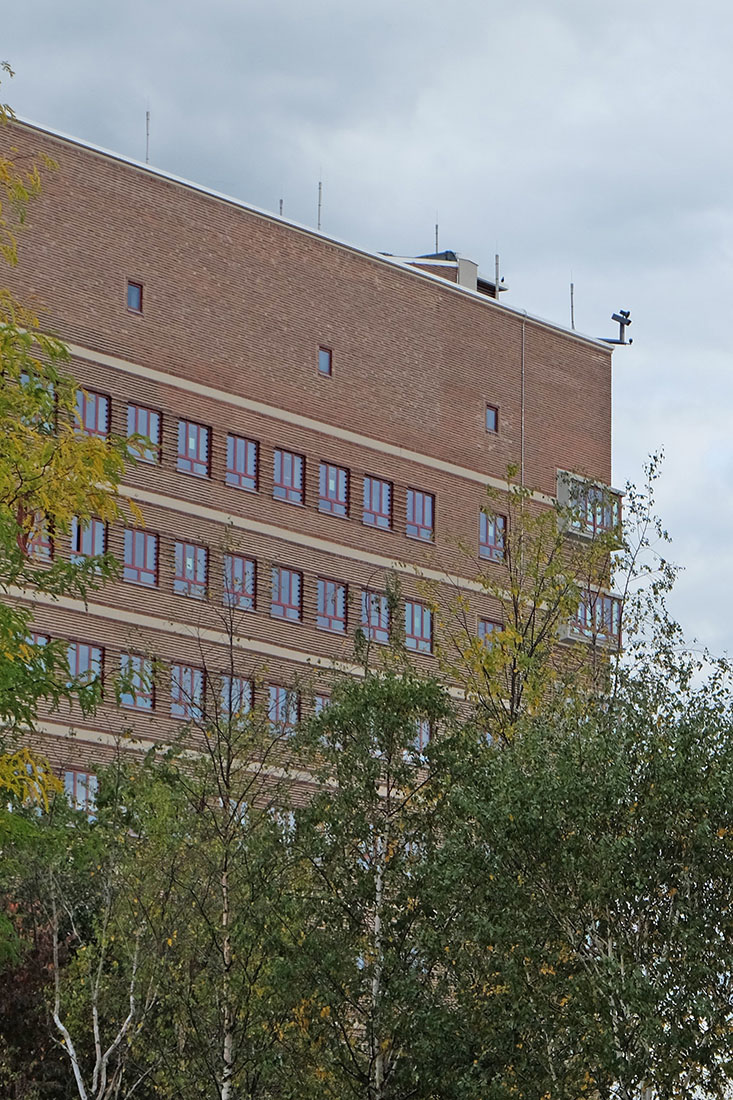 |
 |
 |
 |


Grossmarkthalle
Rückertstrasse 2-6, Frankfurt
1926 - 1928
First considerations to build a large market hall with rail connection outside of the city center arouse in the year 1910. The following year, the city council decided to reserve an area in the immediate vicinity of the new east harbour of Frankfurt. The First World War and the period of inflation prevented the implementation of these plans for a long time. Only on 14 June 1926, the city council approved the construction of the so-called Grossmarkthalle. Designed by the architect Martin Elsaesser, the Grossmarkthalle is a solid construction located on the right bank of the Main river. Inaugurated on 25 October 1928 the large market hall is part of the New Frankfurt project. The building is considered to be one of the most important architectural monuments of Frankfurt. With lenth of 220 meters, a width of 50 meters and a height 17 to 23 meters, the Grossmarkthalle was the largest building complex in the city at that time. Covering an area of 13,000 square meters, the hall could accommodate around 130 stalls which served primarily large consumers, for example for catering and commercial resellers. Furthermore, there were offices and storage areas for wholesalers, freight companies and agencies in and around the building.
The building is realised in solid construction with a free span of 50 meters. Originaly the complex consisted of an elongated hall building and two final wing buildings in the east and west, where they were each connected to an angular annex building, evolving to each side towards the river. The upper two thirds of the long exterior walls are formed into a concrete grid facade, contrasting with the reddish brown bricks used otherwise for the extrior of the building. The approximately 32 meter high end towers on the narrow sides are designed differently. The eastern end building was intended as a cooling tower and was therefore windowless. In west tower were housed offices for administration on seven floors. The corner window and the elevator shafts protrude plastically from the façade pane. On the ground floor were located the delivery entrances for trucks with several gates. The annex buildings housed apartments and restaurants that were operational up to the time when the large market moved out to a new location in 2004. At the time of its construction the Grossmarkthalle was the solid structure in modern shell construction with the largest span. The building is covered by 15 barrel vaults with a support span of 36.9 meters and a vault span of 14.1 meters. The barrel vaults were realized in the so-called Zeiss-Dywidag shell construction in concrete and have a thickness of only 7 centimeters. The basic shape of the arch sections is a semi-ellipse of 6 meters. The vaults were constructed in 1926-1928 by Franz Dischinger and Ulrich Finsterwalder. The hall was realized in a remarkable construction time of 24 weeks.
On 1 January 2005 the site of the Grossmarkthalle was handed over by the city of Frankfurt to the European Central Bank, which planned to build its future headquarters there. Since 1984 the Grossmarkthalle is a listed building, but in 2006 the so-called annex buildings were discharged from the monument protection. The planned demolition of these annexe constructions provoked a copyright dispute with Regine and Thomas Elsaesser, the heirs the Architect Martin Elsaesser, who died in 1957. In the end the annex buildings, dismissed from monument protection, were demolished in the summer of 2008. In July 2010, the windows of the hall building were removed and the walls were demolished in the area of the intended cross bar building volume. The hall takes on the ECB's public functions. It has a visitors' area, a canteen for the staff of the ECB, a press and a conference area. Between the river Main and the Grossmarkthalle was errected the 180 meter high complex of two interlocking skyscrapers, designed by the Viennese architects Coop Himmelb(l)au. In November 2014, the new building was completed, the official inauguration took place on 18 March, 2015. The appearance of the historic Grossmarkthalle is influenced unfortunately by the changes and the neighborhood of the massive tower.